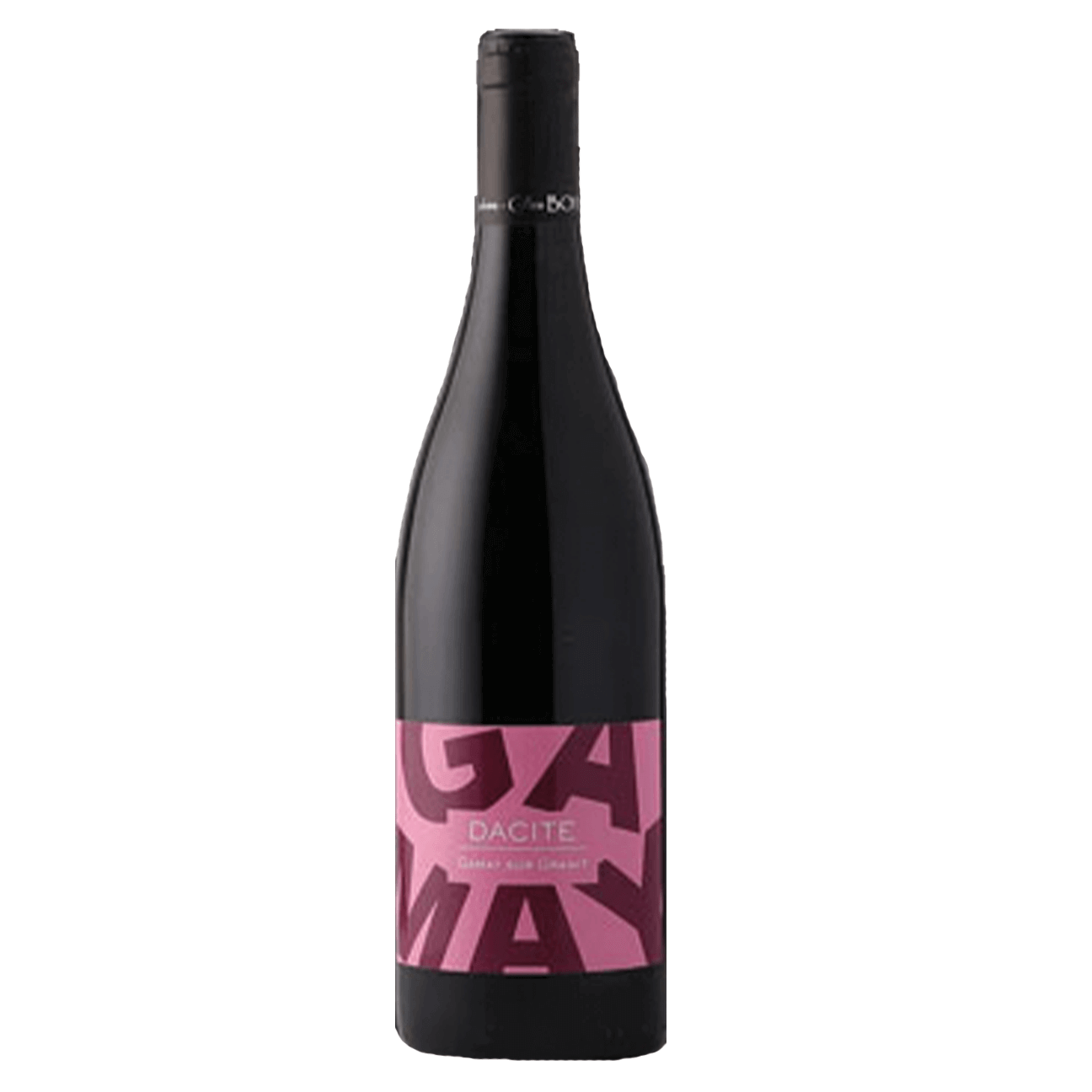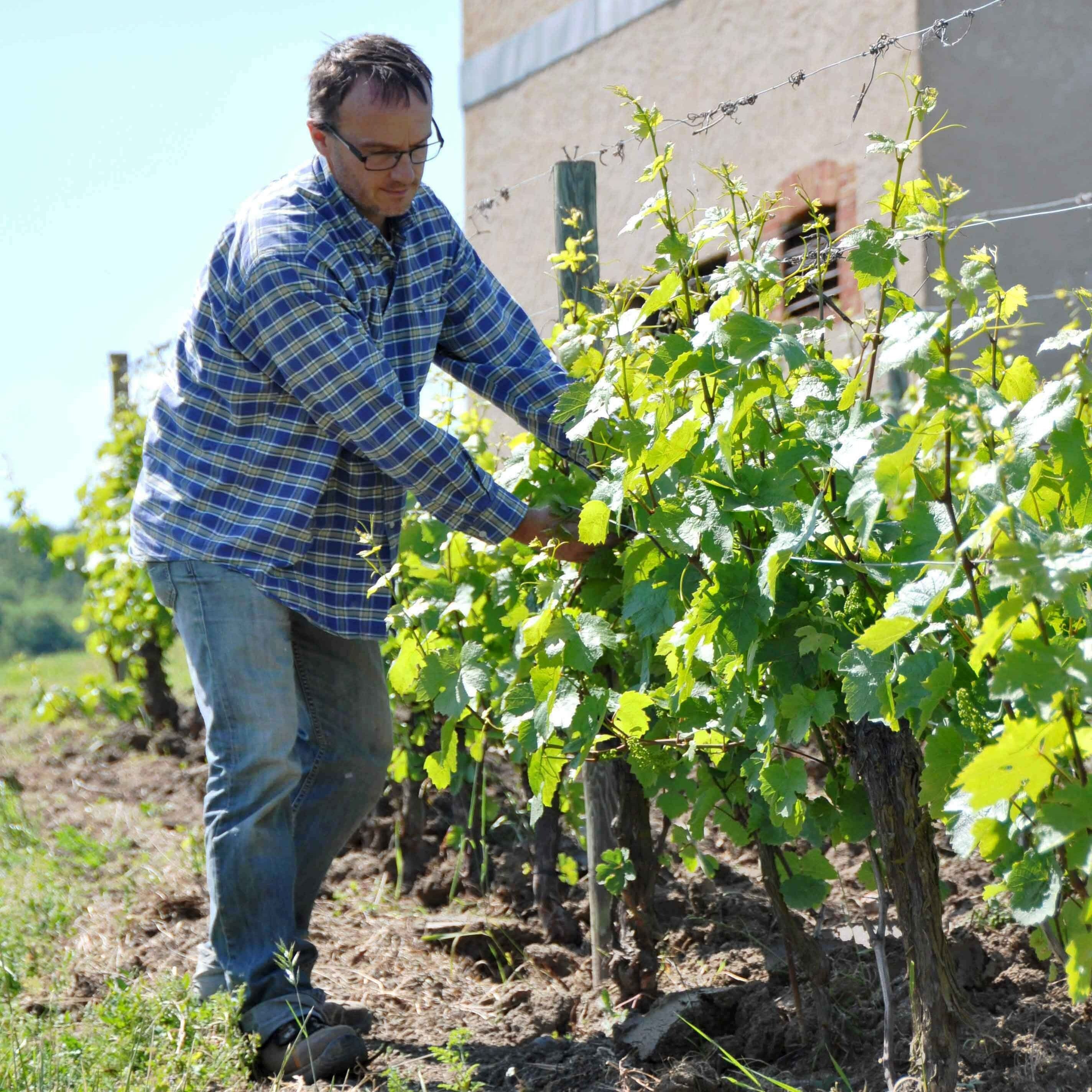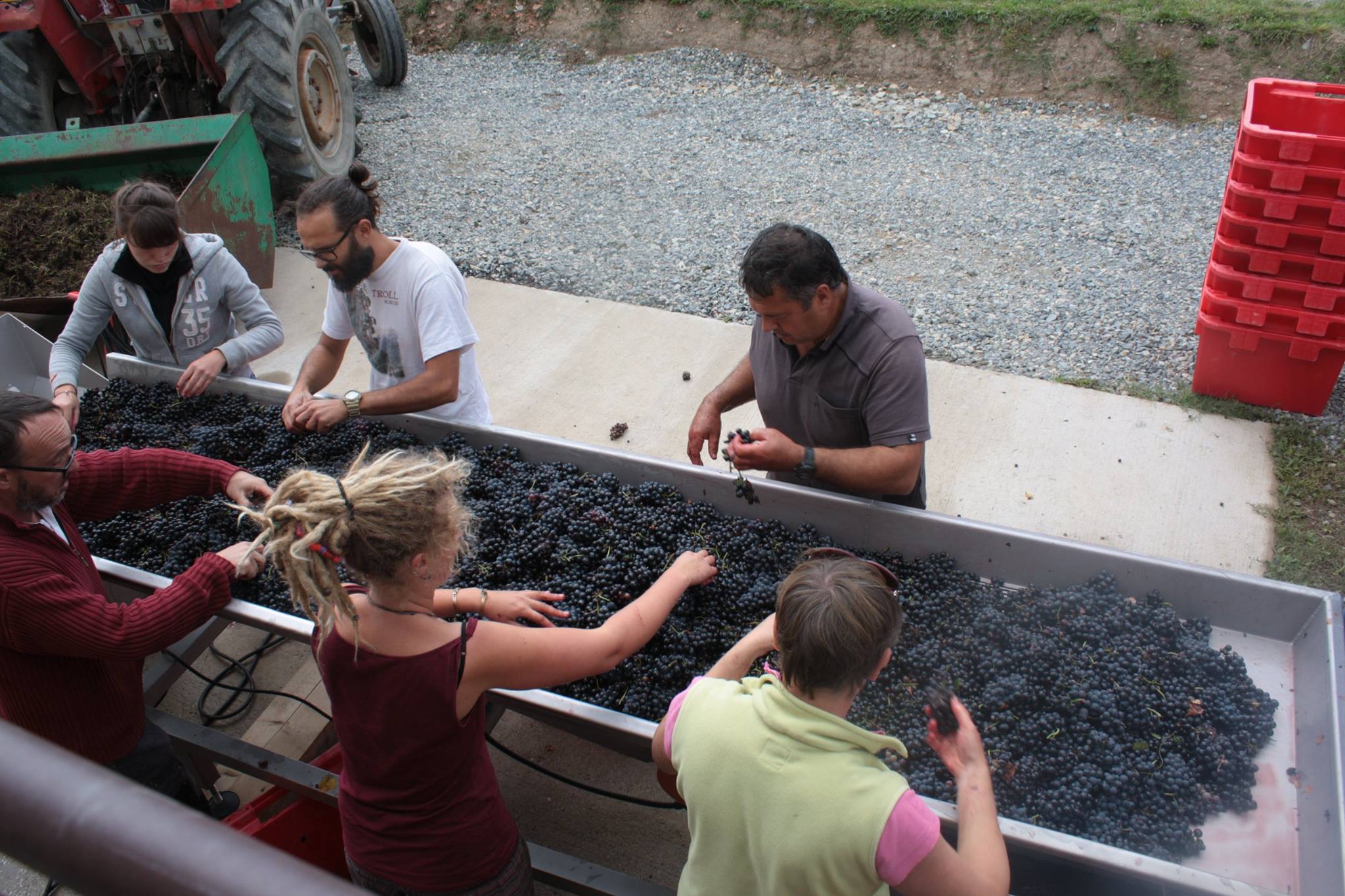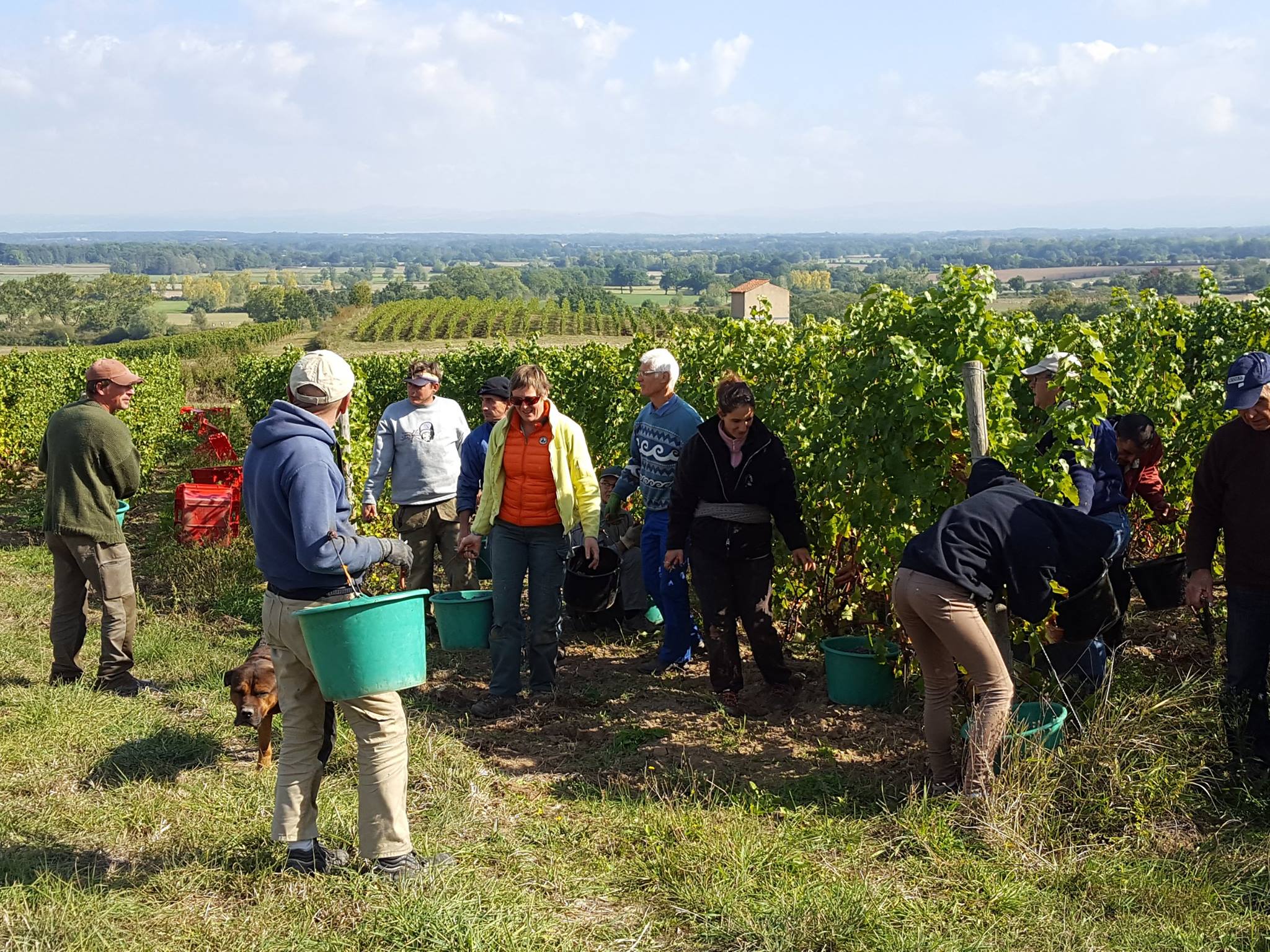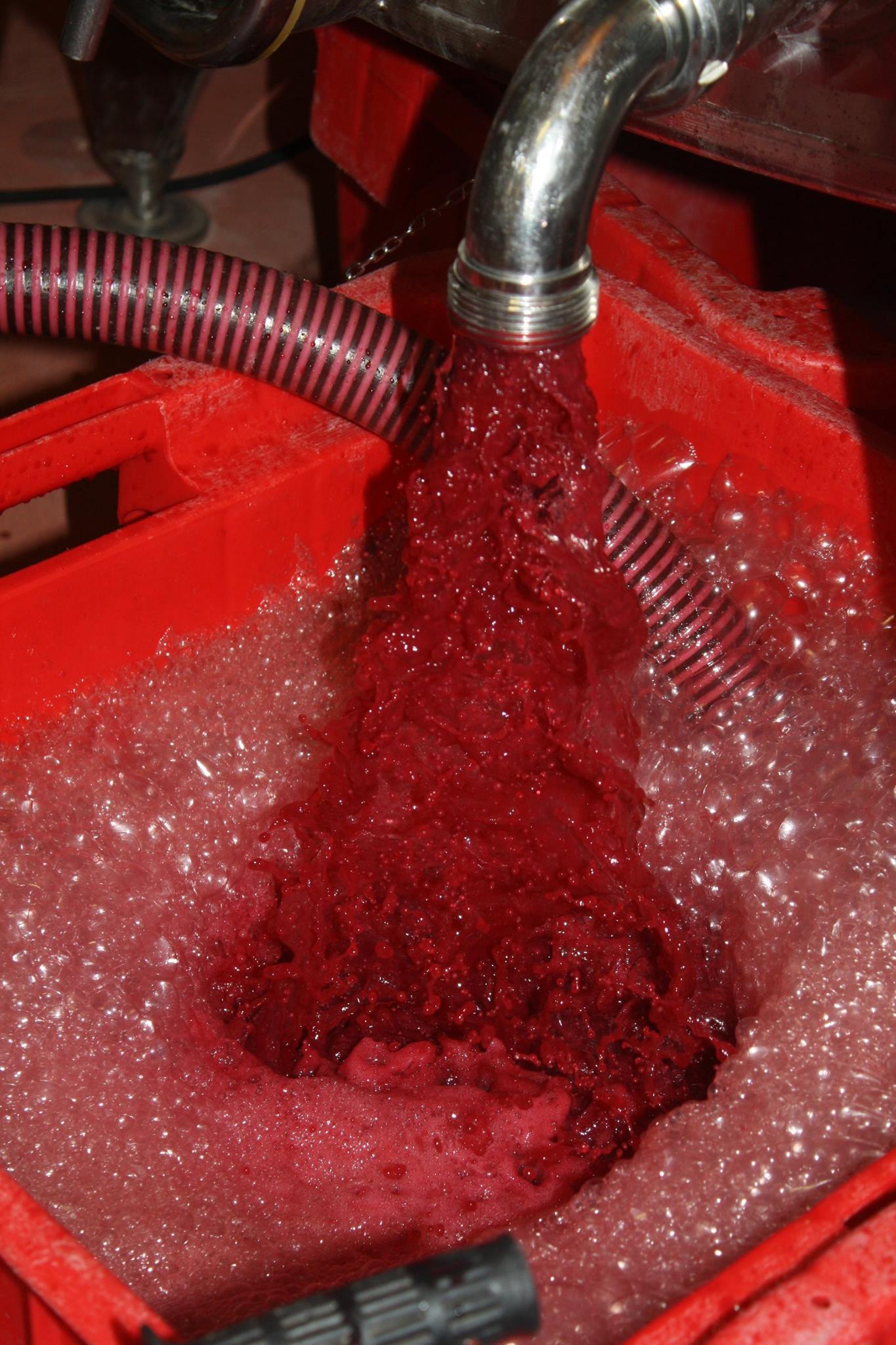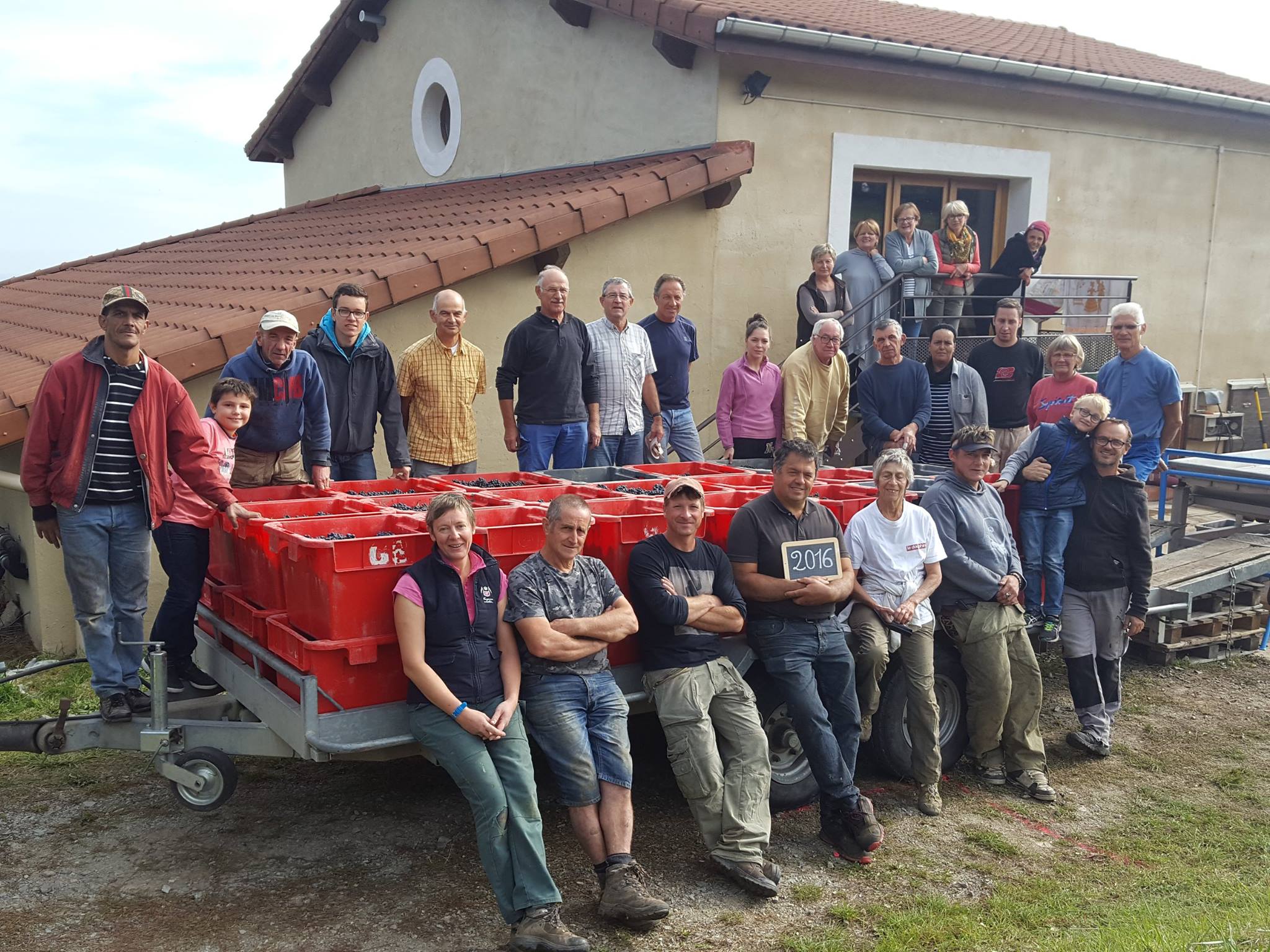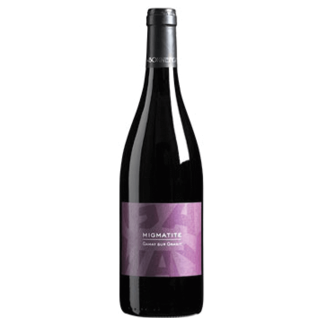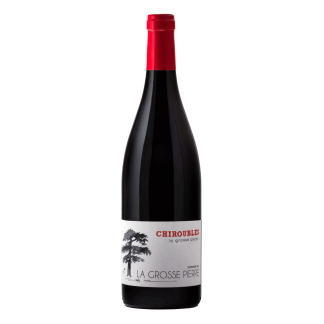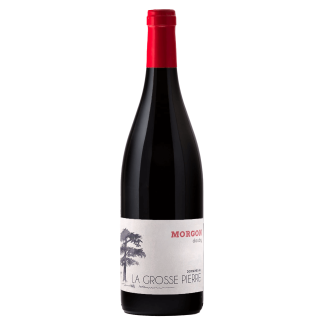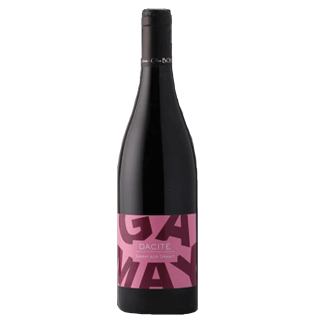Description
About Gilles Bonnefoy et Vins de la Madone
Lip-smacking Biodynamic Gamay from the Volcanic Terroirs of the Massif Central
This was our first visit to the Côtes du Forez, and within minutes we’ve bundled into Gilles Bonnefoy’s beat-up old pickup and are hurtling up the side of an ancient volcano. Our first port of call is the La Madone vineyard, named after the volcano of the same name. At five hectares, La Madone is, by a stretch, Bonnefoy’s largest vineyard. It’s a dramatically steep site, rising 180 metres at a one-in-two gradient, and it sits on an equal blend of volcanic soils and diorite (a microcosm of Côtes du Forez dirt). With its Mosel-like incline, the vineyard must be managed entirely by hand, and frankly, you have to feel for the vignerons responsible for its management. Even to plant here, Gilles first had to clear the land of forest. Whatever possessed him to undertake such a task of founding and managing this demanding vineyard can only be understood when you taste its wine.
You’re not alone if you haven’t heard of the Côtes du Forez. At less than 170 hectares, the vineyard area is tiny and almost entirely unknown—even in France. It wasn’t always this way. Before phylloxera visited the region, more than 5,000 hectares were planted here, and on our tour Bonnefoy pointed out the old hillside mansions built on the fat of the land. The appellation lies on an ancient geological fault-line near the source of the Loire River in France’s Massif Central, about a one-and-a-half-hour drive west of Beaujolais. The vineyards run north to south in a thin cordon on the slopes of the Monts du Forez, about 20 kilometres west of the Loire River. The area is known for its old volcanoes, and evidence of their activity is hard to miss.
The Gamay grape thrives on the volcanic and granite soils here, and it is this potential that Gilles Bonnefoy began to exploit in the late-1990s. The estate originated with the born-again vigneron renting a few plots of old vines and has grown to today’s cultivation of 12 hectares of hillside vineyards. These sites were converted to organic farming in 2001 and biodynamics in 2009 (Demeter certified).
Bonnefoy works across three key soil types—Granite du Forez (in various guises), Migmatites du Montbrison and basalt—each gifting its own cuvée. Gilles Bonnefoy is one of the few remaining vignerons to cling onto and celebrate his region’s pre-phylloxera heritage, so in addition to this fabulous terroir and his Gamay Noir stock, Bonnefoy also farms a cadre of Gamay’s ancient teinturier cultivars such as Gamay de Bouze and Gamay de Chaudenay. Thought to be introduced by the Benedictine monks, these old variants are now almost extinct outside the Forez appellation, making their wines some of the most unique in France.
Bonnefoy’s artisanal toolkit in the cellar includes wild fermentation and varied use of whole bunches, which the vigneron adapts to each terroir (although, as a general rule, the younger vines are destemmed). Everything is hand-harvested and, eschewing wood—to protect his wine’s delicate aromatics—Gilles works with concrete, sandstone amphora and cuve inox. There is very little sulphur used, only a smidge at bottling.
For those new to this producer, La Madone’s Gamays are lip-smackingly vibrant and delicious reds that combine the energy and sensuality of good Beaujolais with cool, rocky freshness and marked savoury nuance. 2021 is just our second year shipping these wines, and despite a much smaller vintage, this time we’ve managed to double our allocation of cuvées.
If you worked with the wines from 2020, know that the new vintage was cooler, manifesting a set of wines with lower alcohols, delicious silky flesh and mouth-watering, crunchy personalities. On the food-matching front, use as you would a Beaujolais from a classical, less powerful vintage. Judging by our tasting in Champdieu, they will be a lot of fun to work with.


